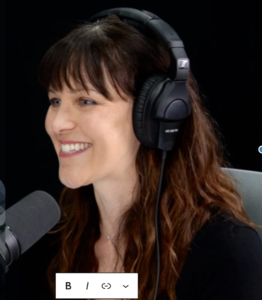
Entrepreneurs don’t know everything. The first step is admitting it.
All founders have strengths and weaknesses. Some people are really great at marketing the heck out of their product and others might have a knack for innovating and thinking outside of the box.
Kate Rogers Sieker’s talent — and greatest passion — is bringing people together. Sieker is a local tech leader and community builder for the Phoenix startup community, which includes spearheading PHX Startup Week every year. Sieker built her whole career on understanding and connecting people.
Sieker spoke about her love of building community with Hamid Shojaee on an episode of AZ Tech Podcast. AZ Tech Beat caught up with her to get her thoughts on one of the biggest challenges entrepreneurs face — hiring the right people for the right positions and then helping them grow.

She listed some of the basic, but important, things to know and understand when managing people.
“One is understanding your culture. What type of culture are you trying to build? It’s best to always keep that in mind when making any people-related decisions,” Sieker said. “Second is understanding your own leadership style, and making sure that your leadership style is complementary to the culture you’re trying to build.”
“And lastly, it’s understanding the natural tendencies of the people or the person that you’re trying to manage,” Sieker continued. “Some people appreciate more autonomy, some people need less, some people need more check-ins, some people need less, and providing the employee what they need to be empowered is part of effective people management.”
Some entrepreneurs are incredibly business-focused. That’s not necessarily a bad thing, but Sieker said it could be if they don’t prioritize their employees.
“It’s a basic responsibility of any leader to consider and support the needs of their people,” Sieker said. “And the people that I know that don’t do that — they just hyper-focus on the business needs — that decision to ignore their people ends up being the downfall of the company, frankly.”
She then quoted Maya Angelou: “I’ve learned that people will forget what you said, people will forget what you did, but people will never forget how you made them feel.”
If people don’t feel like a priority, they’ll leave faster than you think.
“Gone is the age, or the day, where people just come to work for a paycheck. There’s just too much choice,” Sieker said. “It’s not to say that you won’t be able to recruit people — you will — but you’ll have a high level of turnover, and you’ll have a lot of disgruntled people, and that’s a whole other thing to deal with.”
Sieker has spent a lot of time helping some very successful startups recruit the right people. In those early stages of building a company, she’s learned it’s essential to really try to understand the company’s culture and who they need to build the very best product possible. It’s also important to prioritize diversity in thought and experiences.
In order to find the kind of people who will be assets as the company evolves, founders need to develop a keen sense of what they want their company to be.
“What is the purpose of hiring this person? Most times, almost all the times, the purpose that’s stated in the job description falls a little bit short of the real intended person, the real intention of hiring that person,” Sieker said. “Once you understand the larger picture, and the personalities of the team and the manager, then you can start recruiting.”
Sieker said she uses several sets of questions and behavioral interviewing to get to the “gooey center” of who a person is. From there, trust your gut feeling. Is that person really the right candidate for the job?
Sieker said that many times, the candidate best suited for the job looks a little bit different than what you initially thought. There’s consistently a disconnect between who you’re looking for and the reality of the actual pool of candidates. You might be able to get your top three wishlist items from this candidate, but not all five. Or maybe, you can get numbers one, two, four and five, but not number three.
“That’s why it’s really important to understand the gaps and what you’re trying to solve for [by hiring] initially,” Sieker said. “But you want to find the candidate that will also feel a part of the team, that you’re not square peg, round hole-ing it. If they don’t feel like they blend in, it’s a problem. And it’s really hard to overcome that.”
Remember, recruiting and hiring is much more than looking at a candidate’s skills or what they list on their resume.
“It’s not just what a piece of paper looks like. The paper is, in a lot of ways, the least important part of the recruiting process,” Sieker said. “It’s more about fit. Always.”
